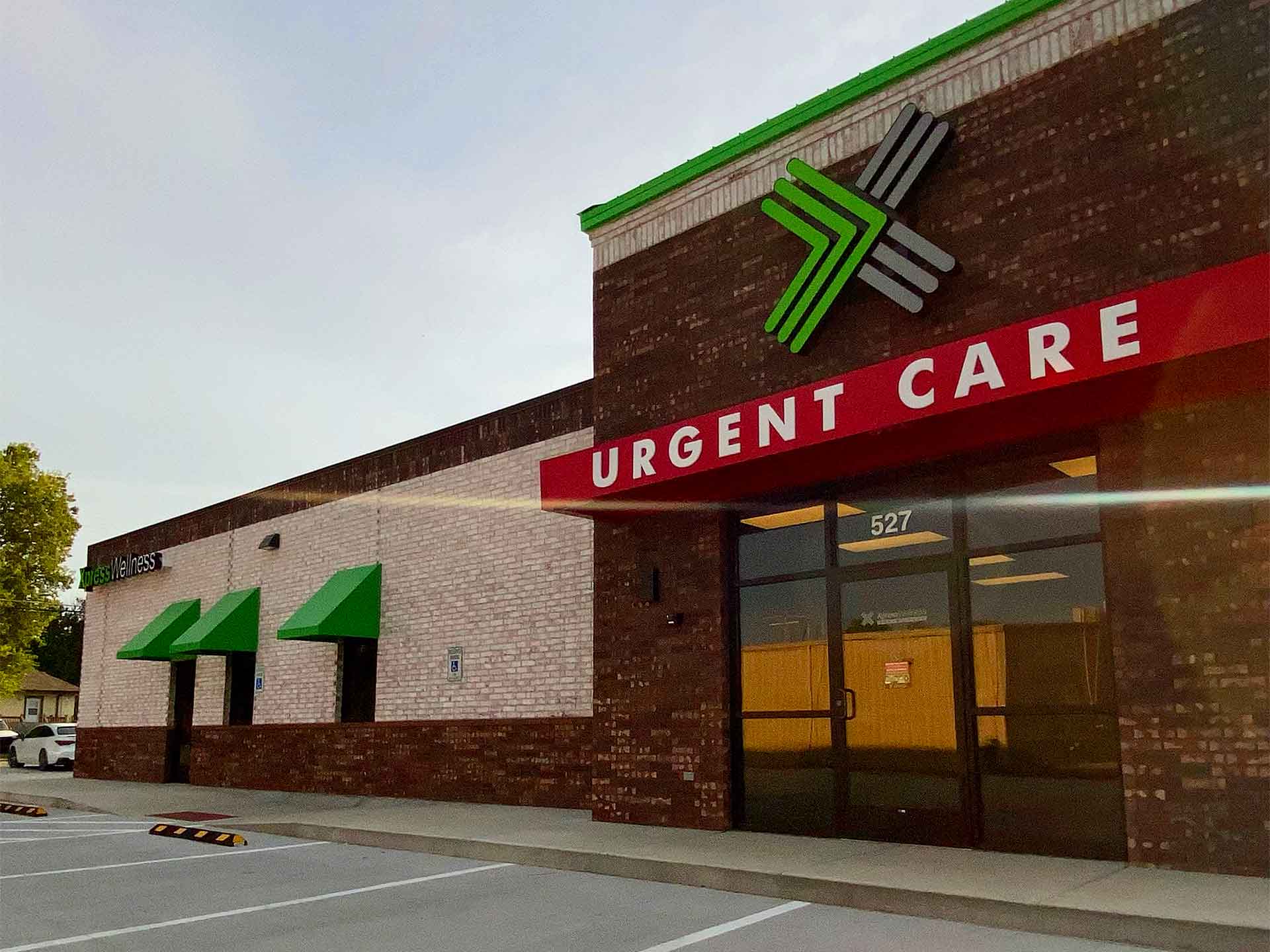The Importance of Urgent Treatment Centers in Bridging the Space In Between Primary Care and Emergency Providers
Immediate treatment facilities have actually emerged as a crucial component of the health care landscape, effectively addressing the critical need for prompt medical attention without resorting to emergency situation solutions. The progressing role of immediate treatment centers elevates crucial concerns about their integration within the more comprehensive health care system and the implications for person results and resource appropriation.
Summary of Urgent Care Centers
Immediate care centers have actually ended up being a crucial element of the medical care shipment system, giving easily accessible medical services for non-life-threatening problems. These facilities commonly operate outdoors basic workplace hours, offering patients an option to emergency clinic and key care settings. Individuals seeking urgent treatment usually existing with concerns such as small injuries, infections, or illnesses that require prompt attention but do not pose an instant threat to life or limb.
Immediate treatment facilities are staffed by an array of health care specialists, consisting of physicians, nurse experts, and physician assistants, that are outfitted to detect and treat various medical worries. They typically include analysis tools such as X-ray makers and lab solutions, allowing them to provide comprehensive care on-site.
The establishment of urgent care centers has been influenced by the increasing demand for timely clinical solutions in a busy culture, where patients may struggle to protect visits with medical care carriers. Therefore, these facilities intend to relieve blockage in emergency situation departments, enhancing general health care performance. Additionally, urgent care centers frequently work as a bridge between health care and emergency situation services, making sure that individuals get suitable care customized to their certain medical needs.

Benefits of Urgent Treatment Provider
Accessing prompt healthcare is a significant advantage of urgent treatment solutions. These facilities provide instant interest for non-life-threatening problems, successfully reducing wait times compared to conventional emergency situation departments. Clients seeking take care of minor injuries, diseases, or urgent health issues can acquire treatment without the long delays typically related to health center visits.
Another key advantage is the extensive hours of procedure. Several immediate treatment centers are open evenings and weekend breaks, accommodating patients who may not have the ability to visit their primary treatment service provider during conventional office hours. This flexibility makes immediate treatment an obtainable alternative for those with hectic routines or sudden wellness problems.
Additionally, urgent treatment facilities typically provide a large range of solutions, consisting of analysis testing, X-rays, and basic research laboratory solutions. This detailed method allows for fast diagnosis and treatment, boosting client fulfillment.
Furthermore, immediate treatment centers are commonly a lot more affordable than emergency areas, making them an eye-catching choice for people without insurance coverage or those with high-deductible plans. On the whole, urgent treatment services play an essential duty in offering accessible, prompt, and economical treatment.
Contrast With Medical Care
Usually, patients commonly weigh their alternatives between urgent treatment centers and medical care companies when looking for medical interest. Both offer vital duties in the healthcare system, yet they differ significantly in scope, expense, and access.
Main treatment companies are commonly the first point of get in touch with for people, concentrating on long-term health and wellness monitoring, preventive care, and persistent condition management. They use connection of care, promoting a patient-provider relationship that enables comprehensive health analyses and individualized treatment plans. However, arranging an appointment can be taxing, typically requiring days or weeks in breakthrough.
On the other hand, immediate care centers provide prompt look after non-life-threatening conditions that require punctual interest, such as minor injuries or infections. These centers commonly operate outside of traditional workplace hours, fitting clients that might not have the ability to see their key my review here care company during normal company times. Additionally, immediate care is generally a lot more affordable than emergency clinic brows through, making it an attractive option for description those with minimal health care access.
Inevitably, while urgent treatment centers and key treatment carriers both add to patient wellness, they deal with distinct requirements, making it crucial for patients to identify which option ideal lines up with their scenarios.
Emergency Situation Services Interaction
The interaction in between urgent treatment facilities and emergency solutions is an important element of the medical care landscape, particularly when individuals face circumstances that might escalate in intensity. Immediate treatment facilities function as a bridge in between health care and emergency divisions, attending to non-life-threatening problems that require instant focus. This cooperation boosts client end results and maximizes resource allotment within the medical care system.
When people present with not dangerous yet immediate issues, urgent care centers can successfully handle their demands, reducing blockage in emergency clinic. Facilities furnished with analysis capabilities can help with timely references to emergency situation services when a patient's problem goes beyond the range of immediate care therapy. This smooth communication assists guarantee that clients receive the appropriate level of treatment without unneeded delays.
Furthermore, effective communication between immediate treatment providers and emergency solutions is critical. Sharing patient info and treatment histories fosters worked with treatment, reducing the risk of repetitive examinations and procedures. As healthcare proceeds to progress, the dynamic partnership in between urgent treatment centers and emergency situation solutions will play a crucial function in improving patient treatment efficiency, satisfaction, and total health and wellness outcomes within the area.
Future of Urgent Treatment Facilities
As healthcare needs advance, the future of urgent care centers is poised to become increasingly important to the overall clinical community look these up (Urgent Care). These facilities are likely to increase their roles by integrating advanced modern technologies, such as telemedicine, synthetic knowledge, and digital health and wellness document integration. This will certainly boost client accessibility and streamline treatment control between urgent treatment, medical care, and emergency situation solutions
Additionally, urgent treatment centers are anticipated to expand their solution offerings to consist of preventive care and chronic illness monitoring. This change will position them as essential components in handling populace wellness, lowering the burden on emergency situation departments, and addressing voids in medical care accessibility.
The growing pattern of value-based treatment will certainly further accelerate the improvement of immediate care facilities, triggering them to concentrate on individual results and fulfillment. Facilities might additionally adopt collaborative practice models, functioning very closely with experts and health care carriers to make certain thorough individual monitoring.
Conclusion
To conclude, urgent treatment centers serve an essential feature in the health care system by providing prompt access to therapy for non-life-threatening problems, effectively reducing stress on emergency situation solutions. Their extended hours and varied series of solutions enhance individual benefit and satisfaction, while likewise ensuring proper treatment shipment. As medical care needs remain to develop, the duty of urgent treatment facilities will likely come to be significantly considerable, further linking the space between health care and emergency situation solutions.
The facility of urgent care centers has actually been affected by the increasing need for timely medical solutions in a fast-paced society, where individuals might struggle to protect appointments with main treatment carriers. Additionally, urgent treatment facilities usually serve as a bridge between main treatment and emergency situation solutions, ensuring that clients get ideal care tailored to their particular clinical demands.
Many urgent treatment facilities are open evenings and weekends, fitting people who may not be able to visit their main treatment company throughout basic office hours (Urgent Care). As medical care proceeds to advance, the dynamic connection between immediate treatment facilities and emergency solutions will play a critical duty in improving client treatment performance, fulfillment, and total wellness end results within the area
